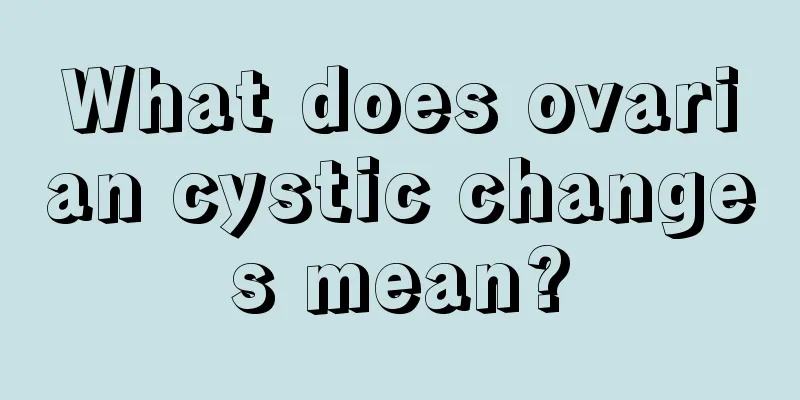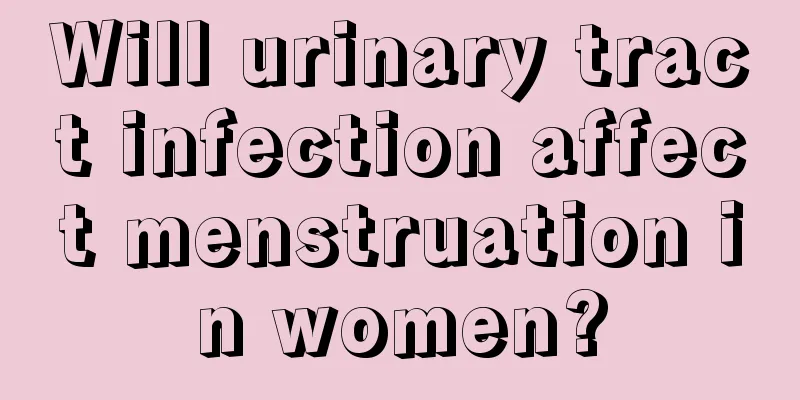What does ovarian cystic changes mean?

|
Ovarian cystic changes are medically known as ovarian cystic degeneration. The main reason for this condition is the production of excessive androgens, and the body will experience symptoms such as menstrual disorders, hirsutism, and obesity. Ovarian cystic changes may cause female infertility. We need to learn as much as possible about this disease and take the correct approach to treatment. So, what do ovarian cystic changes mean? Let’s take a look below. It is a terminal ovarian pathological change caused by dysfunction of multiple endocrine axes. The initial neuroendocrine changes are increased release frequency and pulse amplitude of luteinizing hormone and gonadotropin, and increased ratio of luteinizing hormone to follicle-stimulating hormone. Ovarian cystic change is a type of ovarian tumor, which may be benign or malignant. Therefore, after discovering ovarian cystic change, we must first confirm whether it is benign or malignant. It should be noted that sometimes the ovaries appear to have changes like cysts, but they are not cysts, such as polycystic ovaries, corpus luteum cysts, endometriosis in the ovaries, etc. Although these diseases will also cause lumps on the ovaries, it is recommended that you go to the hospital for a detailed examination to clarify the nature of the ovarian cystic change and provide targeted treatment. symptom Symptoms of ovarian cystic change include menstrual disorders, amenorrhea, anovulation, hirsutism, obesity, infertility and bilateral ovarian enlargement with cystic changes. [1] Patients may have all of the above typical symptoms, or only some of them, but infertility due to ovulation disorders is the main clinical manifestation of PCOS. Many patients with ovarian cystic changes have hyperinsulinemia. Patients with hyperinsulinemia are prone to diabetes and cardiovascular and cerebrovascular diseases. Therefore, polycystic ovary syndrome is also a high-risk factor for diabetes and cardiovascular and cerebrovascular diseases. Polycystic ovary syndrome is one of the symptoms of ovarian cysts. Affects appearance, infertility, metabolic abnormalities, menstrual disorders, obesity and hirsutism, etc. treat Ovarian cystic changes can lead to female infertility, which is a big blow to many female friends who want to have babies, so ovarian cystic changes must be discovered and treated in a timely manner. The current treatment for ovarian cystic changes is drug therapy, but the effect is relatively slow, unlike hormone drugs that will cause dependence. Surgical treatment is effective, and this is the most effective treatment for ovarian cystic changes. |
<<: What does visible yolk sac mean?
>>: What to do if you have ovarian cysts and stomach pain
Recommend
Pay attention to heart safety when exercising in autumn and winter
Every year, there are many similar deaths caused ...
Itching around the anus in women
Perianal pruritus is a skin disease caused by var...
Will I have breast pain during ovulation?
The ovulation period for women is a relatively sp...
Will drinking pure milk make your breasts bigger?
Women all want to have a pair of proud breasts. B...
Why do women have difficulty urinating?
Everyone needs to urinate and replenish enough wa...
What does a small amount of fluid in the Dow's cavity mean?
The Dow's cavity belongs to the pelvis and is...
Is it true that pregnant women can drink mung bean soup to remove fetal toxins?
Every family is always excited when a new life is...
What to do if you keep sweating during menopause
Some women sweat a lot during menopause, which ca...
Picture of female cockscomb warts
Genital warts in women are epithelial cell prolif...
Jia Haiwei, what are the three stages of treatment for high-risk neuroblastoma?
What are the three stages of treatment for high-r...
Is it normal for women to snore?
Snoring is not a normal phenomenon and can cause ...
How to treat urticaria during lactation effectively
Urticaria is a common skin disease that has a cer...
The significance of tumor staging
Author: Han Shengnan Jiaxing Second Hospital Revi...
Is it normal for vaginal discharge to be yellow and smelly?
Women's leucorrhea is very important in physi...
Blood clots are most likely to get stuck in these 3 places! Don't delay if your body shows these 4 signs...
Thromboembolism, a potentially fatal condition ca...









